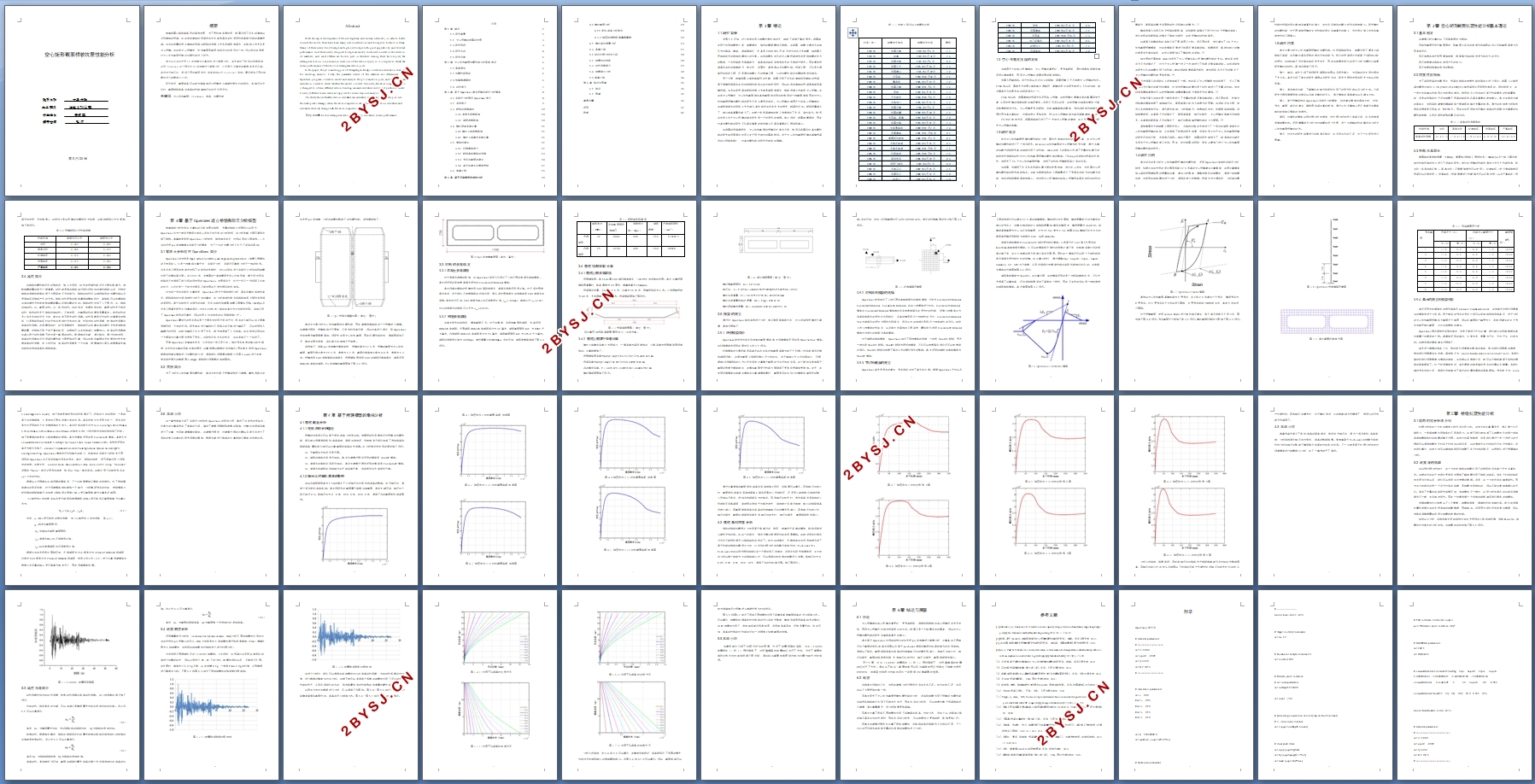空心矩形截面桥墩抗震性能分析
无需注册登录,支付后按照提示操作即可获取该资料.
空心矩形截面桥墩抗震性能分析(论文14000字,外文翻译)
摘要
随着我国公路铁路路网的高速发展,为了更好地连通世界,我国出现了许多新建造以及待建造的桥梁。在这些新建造的桥梁中有许多都是具有良好适用性和卓越性能的高墩桥梁。并且这些最新设计建造的桥梁在材料的选择上大多是钢筋混凝土,在结构上也大多是空心桥墩。在这些空心桥墩中,矩形截面是截面类型中比较常用的一种,所以急切地需要对空心矩形截面桥墩的抗震性能进行研究。
本文以长虫沟大桥p3连接墩为计算实例进行建模分析。首先确定了材料的参数取值,运用OpenSees这一程序对p3连接墩进行建模分析,之后通过手算来验算模型是否正确。其次改变轴压比,得到不同的截面弯矩-曲率曲线以及pushover曲线。最后施加不同的地震波进行地震响应分析。
研究表明,截面曲率可以较为准确地反应桥墩进入弹塑性损伤时的状态;当轴压比变化时,截面极限曲率与曲率延性随着轴压比的变化而变化。
关键词:空心矩形截面;OpenSees;曲率;抗震性能
Abstract
With the rapid development of China's highway and railway networks, in order to better connect the world, there have been many new constructions and bridges to be built in China. Many of these newly built bridges are high-rise bridges with good applicability and excellent performance. And these newly designed bridges are mostly reinforced concrete in the selection of materials, and most of them are hollow piers in structure. Among these hollow piers, the rectangular section is a commonly used one of the section types, so it is urgent to study the seismic performance of the hollow rectangular section piers.
In this paper, the p3 connecting pier of Changbugou Bridge is used as a calculation example for modeling analysis. Firstly, the parameter values of the materials are determined. The OpenSees program is used to model and analyze the p3 connection piers, and then the hand calculation is used to check whether the model is correct. Secondly, the axial compression ratio is changed to obtain different section bending moment-curvature curves and pushover curves. Finally, different seismic waves are applied for seismic response analysis.
The study shows that the section curvature can accurately reflect the state of the pier into the elastoplastic damage; when the axial compression ratio changes, the section curvature and curvature ductility change with the axial compression ratio.
Key words: hollow rectangular section; OpenSees; curvature; seismic performance

目录
第1章 绪论 1
1.1研究背景 1
1.2 空心桥墩在我国的发展 3
1.3研究现状 3
1.4研究目的 4
1.5研究内容 5
第2章 空心矩形截面抗震性能分析基本理论 6
2.1基本假定 6
2.2抗震性能指标 6
2.3性能水准划分 6
2.4 延性简介 7
第3章 基于OpenSees建立桥墩有限元分析模型 8
3.1有限元分析程序OpenSees简介 8
3.2 实例简介 9
3.3 材料的参数确定 10
3.3.1混凝土参数取值 10
3.3.2 钢筋参数取值 10
3.4 墩柱顶部荷载计算 11
3.4.1墩柱上部参数取值 11
3.4.2 墩柱上部集中荷载计算 11
3.5 模型的建立 12
3.5.1 纤维模型简介 12
3.5.2 材料本构模型的选择 13
3.5.3 节点与截面的建立 14
3.5.4 单元的建立与模型检验 17
3.6 本章小结 19
第4章 基于所建模型的墩柱分析 20
4.1墩柱截面分析 20
4.1.1弯矩-曲率分析理论 20
4.1.2轴压比对弯矩-曲率的影响 20
4.2 墩柱单向推覆分析 23
4.3 本章小结 27
5.1动态时程分析法介绍 28
5.2 地震波的选取 28
5.3 延性系数简介 29
5.4 地震响应分析 30
5.5本章小结 34
第6章 结论与展望 35
6.1 结论 35
6.2 展望 35
参考文献 36
附录 37
致谢 41
